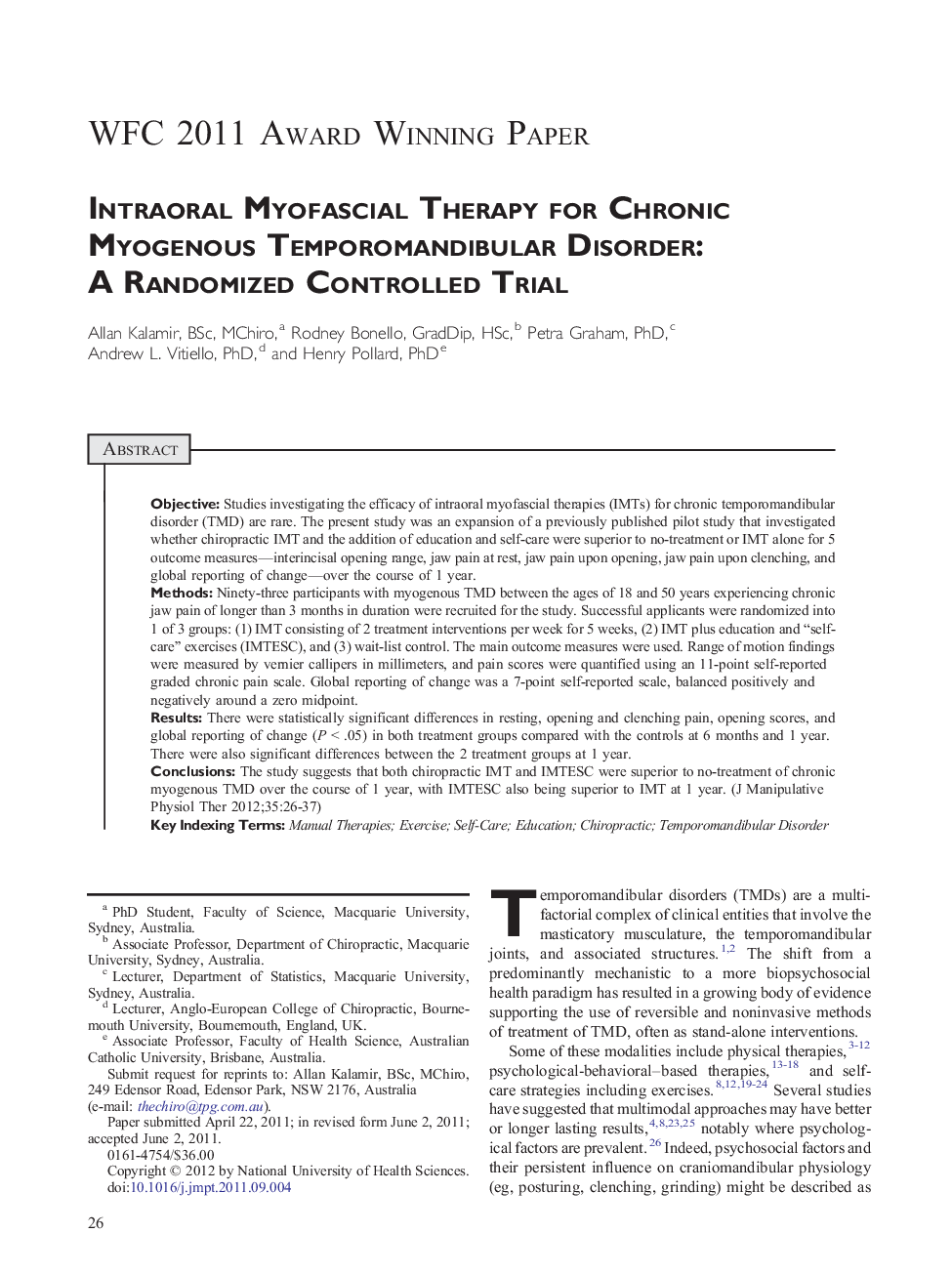| Article ID | Journal | Published Year | Pages | File Type |
|---|---|---|---|---|
| 2620730 | Journal of Manipulative and Physiological Therapeutics | 2012 | 12 Pages |
ObjectiveStudies investigating the efficacy of intraoral myofascial therapies (IMTs) for chronic temporomandibular disorder (TMD) are rare. The present study was an expansion of a previously published pilot study that investigated whether chiropractic IMT and the addition of education and self-care were superior to no-treatment or IMT alone for 5 outcome measures—interincisal opening range, jaw pain at rest, jaw pain upon opening, jaw pain upon clenching, and global reporting of change—over the course of 1 year.MethodsNinety-three participants with myogenous TMD between the ages of 18 and 50 years experiencing chronic jaw pain of longer than 3 months in duration were recruited for the study. Successful applicants were randomized into 1 of 3 groups: (1) IMT consisting of 2 treatment interventions per week for 5 weeks, (2) IMT plus education and “self-care” exercises (IMTESC), and (3) wait-list control. The main outcome measures were used. Range of motion findings were measured by vernier callipers in millimeters, and pain scores were quantified using an 11-point self-reported graded chronic pain scale. Global reporting of change was a 7-point self-reported scale, balanced positively and negatively around a zero midpoint.ResultsThere were statistically significant differences in resting, opening and clenching pain, opening scores, and global reporting of change (P < .05) in both treatment groups compared with the controls at 6 months and 1 year. There were also significant differences between the 2 treatment groups at 1 year.ConclusionsThe study suggests that both chiropractic IMT and IMTESC were superior to no-treatment of chronic myogenous TMD over the course of 1 year, with IMTESC also being superior to IMT at 1 year.
